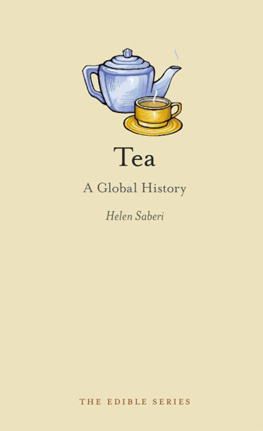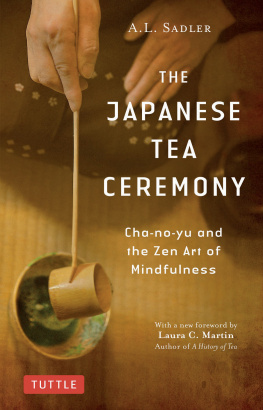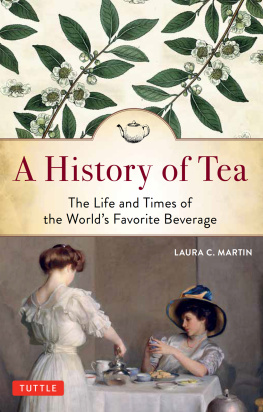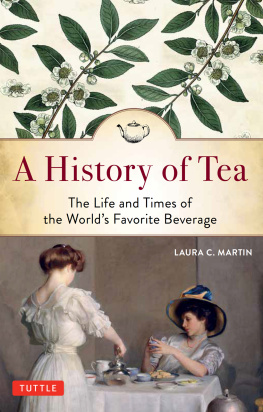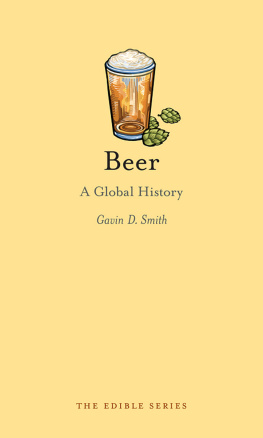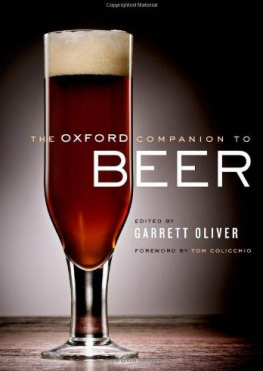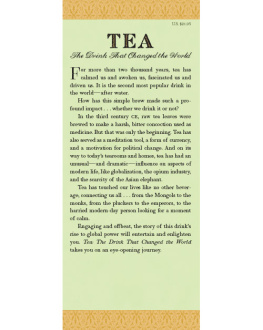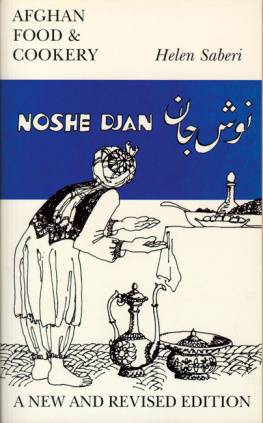Tea
A Global History
Helen Saberi
REAKTION BOOKS
For Nasir Saberi, with whom I have shared many cups of tea
And to the memory of John Canning, my father, who used to bring me an early morning strong cup of tea and to Alan Davidson, who liked to have a kipper with his tea
Published by Reaktion Books Ltd
33 Great Sutton Street
London EC1V 0DX, UK
www.reaktionbooks.co.uk
First published 2010
Copyright Helen Saberi 2010
The moral rights of the author have been asserted
All rights reserved
No part of this publication may be reproduced, stored in a retrieval system, or transmitted, in any form or by any means, electronic, mechanical, photocopying, recording or otherwise, without the prior permission of the publishers.
Page references in the Photo Acknowledgements and
Index match the printed edition of this book.
Printed and bound in China
British Library Cataloguing in Publication Data
Saberi, Helen
Tea: a global history. (Edible)
1. Tea. 2. Tea History.
I. Title II. Series
641.3384-dc22
eISBN: 9781861898920
Contents

Introduction

The first cup caresses my dry lips and throat,
The second shatters the walls of my lonely sadness,
The third searches the dry rivulets of my soul to find the stories
of five thousand scrolls.
With the fourth the pain of past injustice vanishes through
my pores.
The fifth purifies my flesh and bone.
With the sixth I am in touch with the immortals.
The seventh gives such pleasure I can hardly bear.
The fresh wind blows through my wings
As I make my way to Penglai.
Lu Tong
The Chinese sip it from tiny cups, the Japanese whisk it. In America they serve it iced. The Tibetans add butter. The Russians serve with lemon. Mint is added in North Africa. Afghans flavour it with cardamom. The Irish and the British drink it by the gallon with milk and sugar. The Indians boil it with condensed milk. In Australia it is brewed in a billy can.
Tea, made from the dried leaves of the evergreen shrub Camellia sinensis infused in boiling water, is consumed by millions across the world. It is the second most popular beveragein the world after water. Tea quenches thirst, heals and sustains. It is drunk for enjoyment and for health. Wherever and however it is taken, tea brings well-being, harmony, politeness, conviviality and hospitality. From its legendary beginnings in China to its present-day popularity, tea has had a long and vivid history. Its story is steeped in ritual and religion, adventure and enterprise, smuggling and revolution, literature and social change.
The word tea comes from the Chinese Amoy word te, pronounced tay. The Dutch, who were the first to import tea into Europe from the port of Amoy in Fujian Province, called it thee, which became tea in English. The Mandarin word for tea is cha, which became cha (pronounced tcha) in Cantonese. Variations passed into other languages, becoming chai in India, Afghanistan, Persia, Russia and Turkish and shai in Arabic. Cha or char was the form in which it first appeared in English in the late sixteenth century and the word still survives colloquially in the expression a cup of char.
At first mainly valued for its health benefits, drinking tea was later discovered by Buddhists to be an effective way of keeping awake during long hours of meditation. The Japanese call tea O Cha, meaning honourable tea, and have evolved the elaborate ritual of the tea ceremony. This book describes some of the traditions of tea-drinking and hospitality that have evolved over hundreds of years.
Very early in its history tea was transported along ancient caravan routes and traded in distant and remote regions. We discover how tea came to the West in the days when clipper ships raced to be the first to unload their precious cargoes. We visit tea gardens and tea houses, look at tea dances and see how the great British tradition of afternoon tea began. Across the Atlantic we encounter the famous Boston Tea Party which played a part in Americas pursuit of independence; theinvention of iced tea and the tea bag; and the latest trends of chai and bubble tea.
We learn how the tea plant was discovered in India and how India has become the second largest producer in the world after China. We observe how tea played an important social role during the Raj; how the people of India drank it in Irani cafes and how it is enjoyed today, when myriad types of tea are produced around the world from Argentina to Zimbabwe. How did all this begin? This book tells the story.
1
What is Tea?

In Chinese legend, the story of tea begins with Emperor Shen Nong (27372697 BC), also known as the Divine Healer, the Divine Husbandman and the Divine Cultivator. The Emperor decreed that to preserve their health his subjects must boil water before drinking it. One day while he was boiling water some leaves, blown by the wind, accidentally fell into the pot. Tasting the result, Shen was not only delighted with the flavour but also felt invigorated. The leaves came from the plant which we know today as Camellia sinensis. Shen ordered extensive planting and recommended the infusion to his subjects, declaring, Tea gives vigour to the body, contentment to the mind and determination of purpose.
The Japanese attribute the beginnings of tea to Dharma (also known as Bodhidharma), a missionary Buddhist monk who travelled from his native India to China at the end of the fifth century. The legend tells how Dharma dedicated seven years to a sleepless devotion to the Buddha. During meditation he found his concentration failing so he cut off his eyelids to stay awake and threw them on the ground. A tea plant grew from each spot where the eye lids had fallen. The leaves of this plant were made into a drink which stimulated the holy man and his flagging worshippers.
Some sources claim that tea originally grew wild in Assam and, according to another legend, the Buddhist scholar Wu Li Zhen, who had been studying in India, returned to China around 53 BC with seven tea plants which he planted on Meng mountain in Sichuan. This story is borne out by the fact that the earliest records of tea being cultivated come from Sichuan at this time. The tea planted on Meng mountain has become famous in China and is known as Gan Lu, meaning sweet dew.

